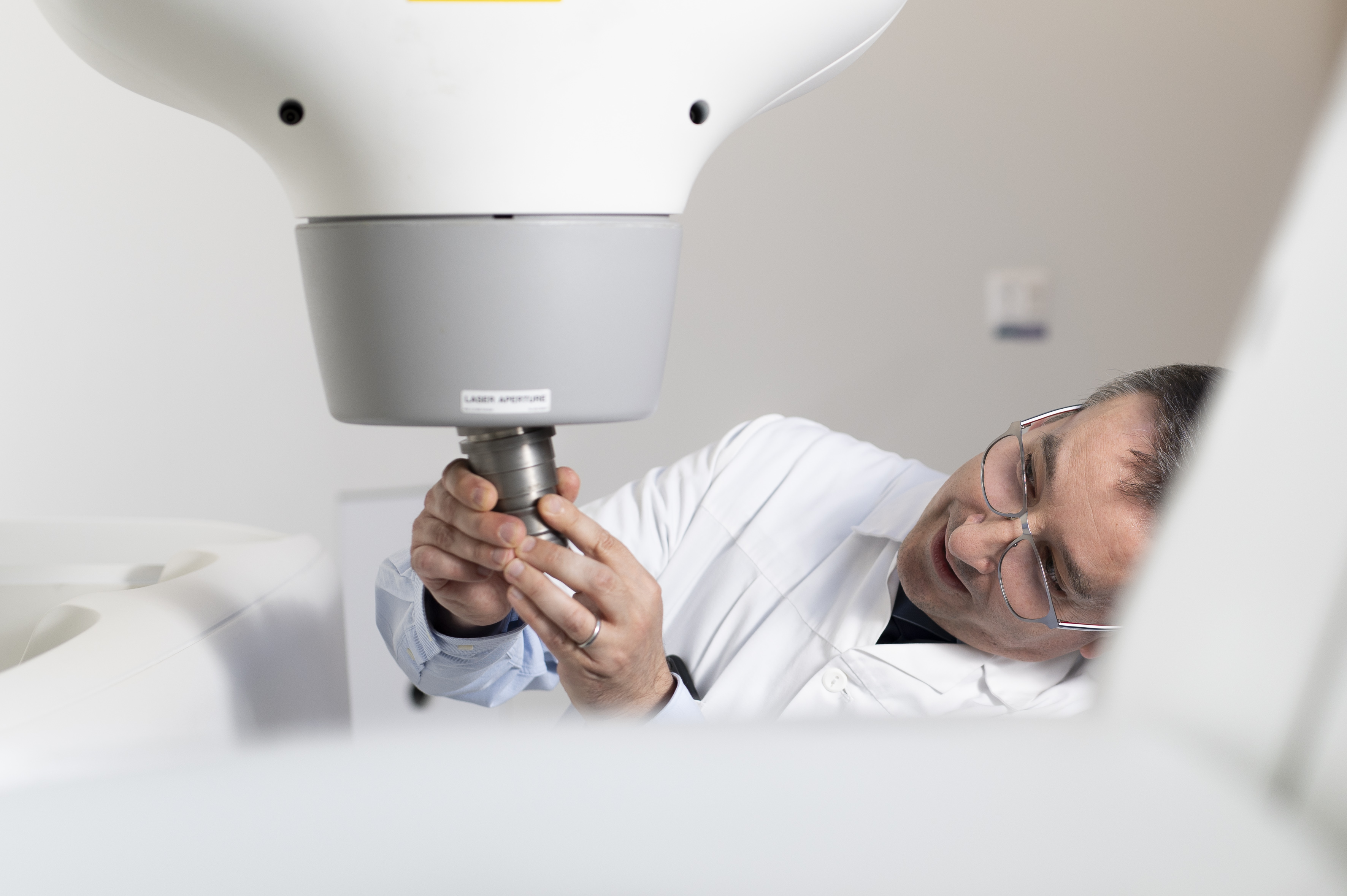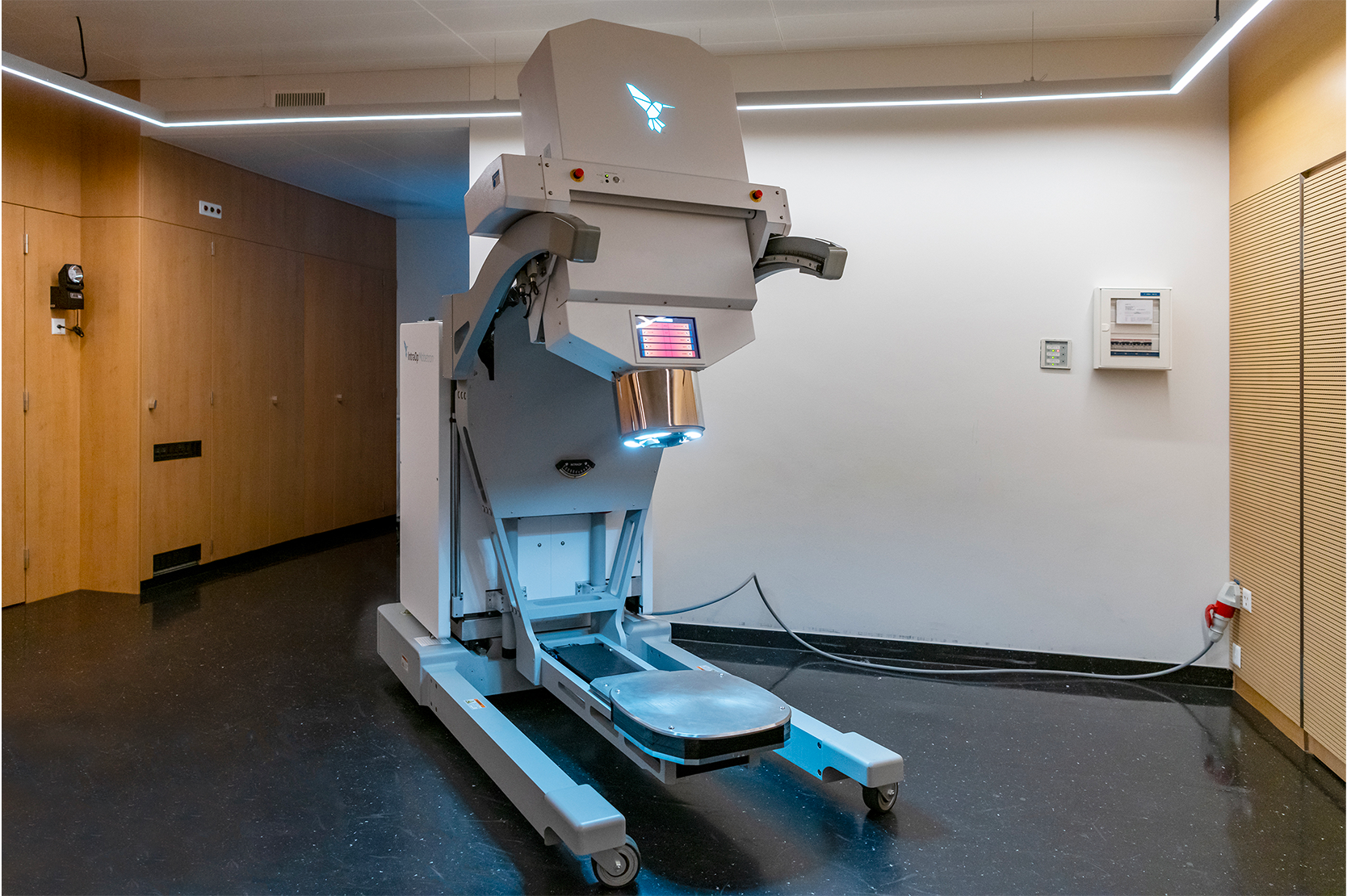Flash radiotherapy
Radiation therapy is one of the main forms of cancer treatment, along with chemotherapy, surgery and immunotherapy. However, many cancers are resistant to conventional radiotherapy.
Flash radiotherapy is a cutting-edge approach that delivers a high dose of radiation in a very short amount of time, typically less than 100 milliseconds. By contrast, traditional radiation therapy delivers radiation over a longer period of several 100 milliseconds during which time the radiation dose accumulates in the tumour and surrounding tissues. This can lead to damage of healthy tissues, limiting the amount of radiation that can be safely delivered to the tumour.


For patients with newly diagnosed glioblastoma
Although clinical data on the use of flash radiotherapy in glioblastoma - a fast-growing and aggressive brain tumour - are still limited, preliminary preclinical studies suggest that flash radiotherapy can significantly reduce damage to healthy brain tissue while effectively controlling tumour growth.
Our ultimate goal is to improve treatment outcomes for patients with newly diagnosed glioblastoma by combining this new approach with chemotherapy.
Currently, the CHUV is collaborating with CERN in Geneva, to develop a Flash RT machine that will be able to deliver flash radiation therapy in a 3D conformation. This technology will allow medical professionals to treat the complex shapes that glioblastoma may take, while simultaneously protecting particularly vulnerable areas of the brain. Read the press release
By harnessing the power of innovative technology and interdisciplinary collaboration, we aim to make significant progress in the fight against brain cancer.



